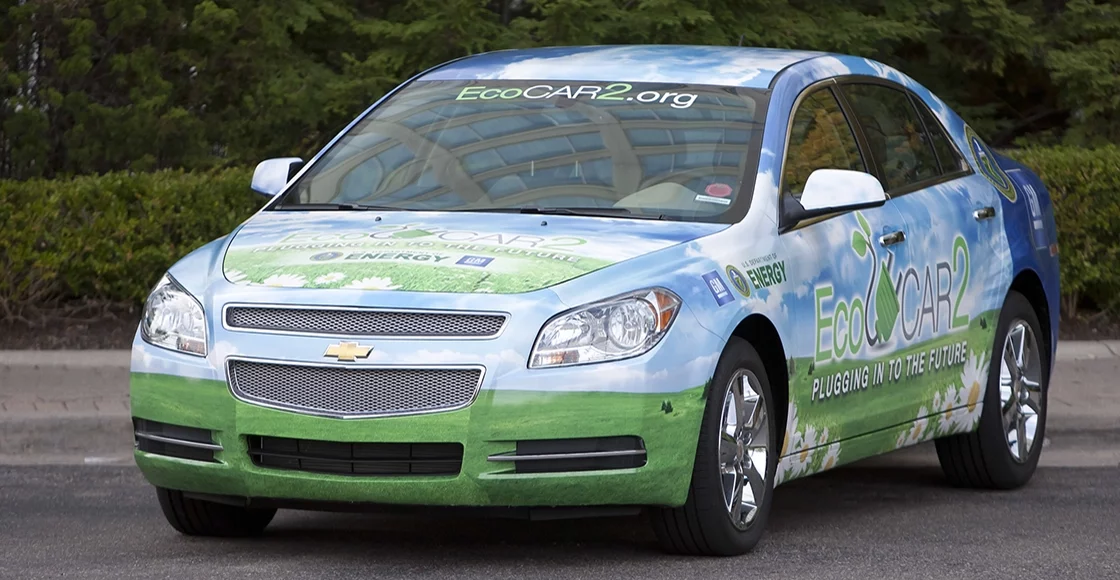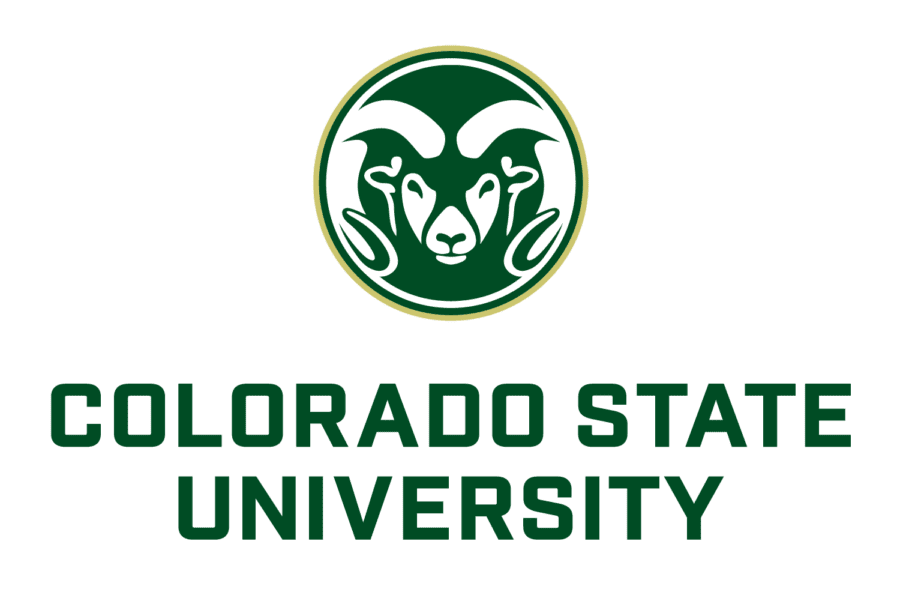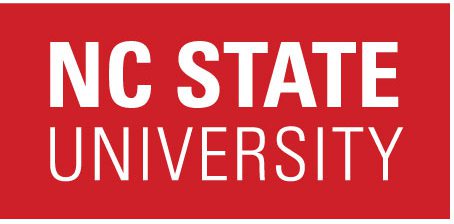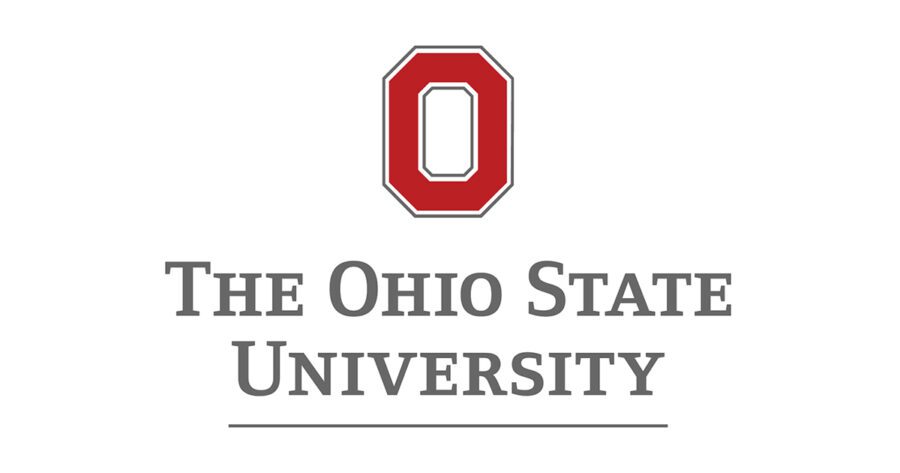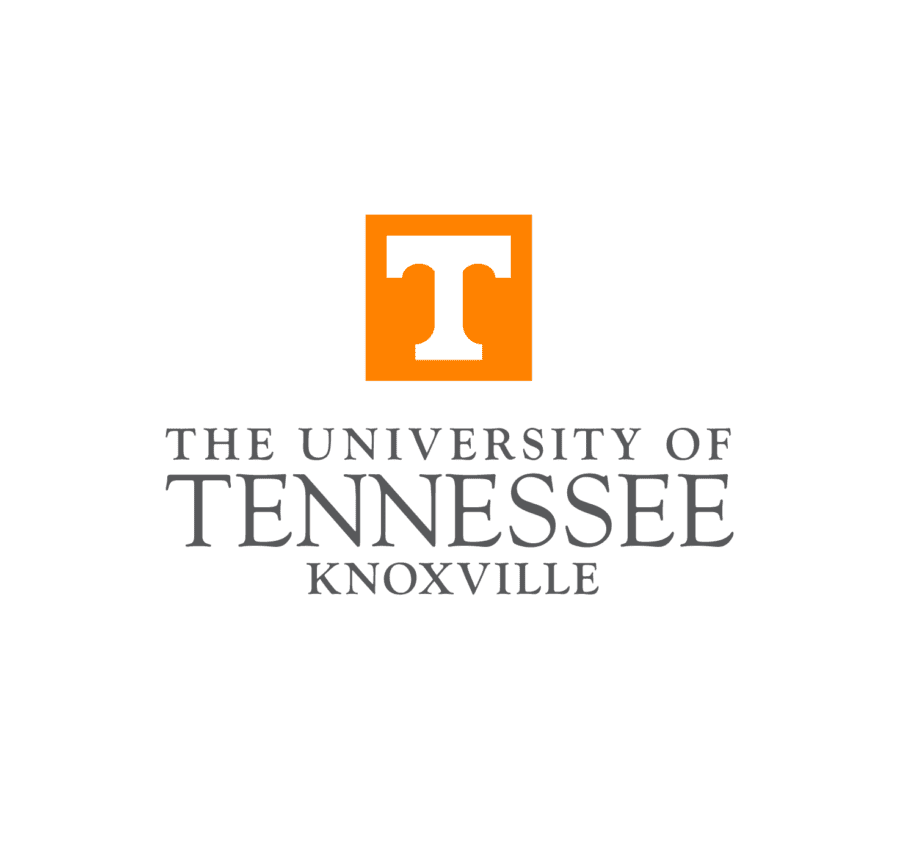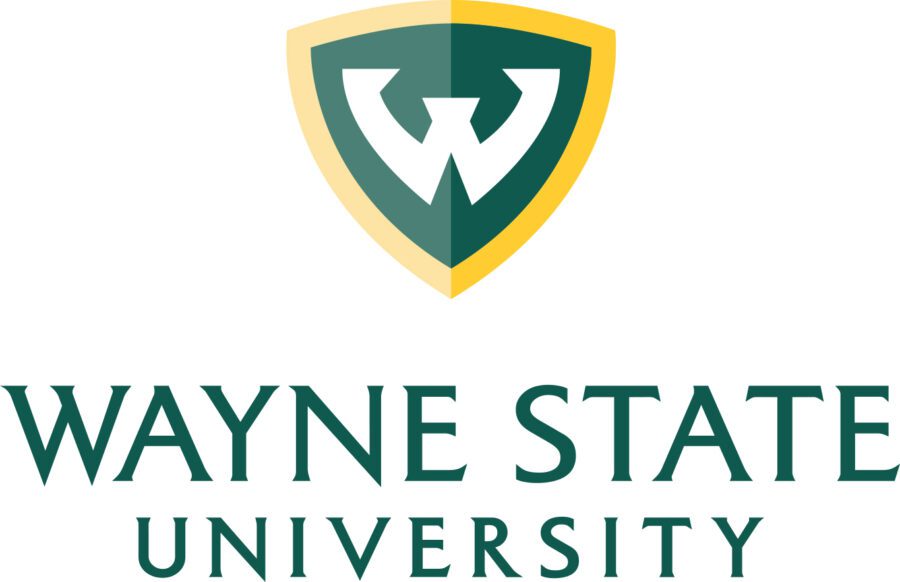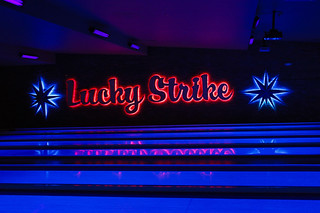EcoCAR 2: Plugging into the Future
Background
EcoCAR 2: Plugging In to the Future was a three-year collegiate advanced vehicle technology engineering competition established by the United States Department of Energy and General Motors (GM), and was managed by Argonne National Laboratory. The competition challenged 15 universities from across North America to reduce the environmental impact of the 2013 Chevrolet Malibu by improving its fuel efficiency and minimizing the vehicle’s emissions while retaining its performance and consumer appeal.
The competition was modeled after the GM’s real-world vehicle development process (VDP) and was broken down into three academic years, each focusing on a different stage in the VDP:
- Year One: The teams selected vehicle architectures by using modeling and simulation. They used hardware-in-the loop (HIL) simulators to develop and test their control strategies.
- Year Two: The teams turned virtual designs into functioning prototype vehicles.
- Year Three: The teams refined their vehicles to near-showroom quality.
All student-designed EcoCAR 2 vehicles were plug-in hybrid electric vehicles (PHEVs), which deplete an on-board battery to displace vehicle fuel. The powertrain components were configured to drive the vehicle in five unique combinations:
- Split-parallel,
- Series-parallel,
- Parallel through the road (PTTR),
- Series, and
- Hydrogen fuel cell series.
In Year One (2011-2012) of the competition, teams designed and modified a vehicle architecture and developed their control strategy through the use of controller HIL tools. The teams also designed major subsystems, including hybrid powertrain, energy storage, thermal management and high-power electrical systems. Year One formed the foundation for the vehicle development and refinement tasks in Years Two and Three of the competition. The year-end competition was held in Los Angeles, California where teams competed in various static presentation events as well showcased a trade show display.
The teams received their GM-donated Chevrolet Malibu’s at the beginning of Year Two (2012-2013) and began integrating their powertrain components and other subsystems to develop a running ‘mule vehicle.’ During this second year of the competition, the teams competed in engineering tests similar to the tests GM conducts to determine a prototype’s readiness for production at General Motors Desert Proving Grounds in Yuma, Arizona. These dynamic vehicle testing events included a 300-point safety and technical inspection, acceleration and braking, AVL DRIVE Quality, emissions and energy consumption, and more. Teams then traveled to San Diego, California for the final stage of the Year Two competition.

In the third and final year (2013-2014), EcoCAR2 challenged teams to refine their vehicles into near-production prototype vehicles that which would demonstrate improved fuel economy and lower greenhouse gas emissions, while also focusing on performance and consumer appeal. The Year Three Competition was held at General Motors Milford Proving Grounds in Milford, Michigan and Washington, D.C. in June 2014.
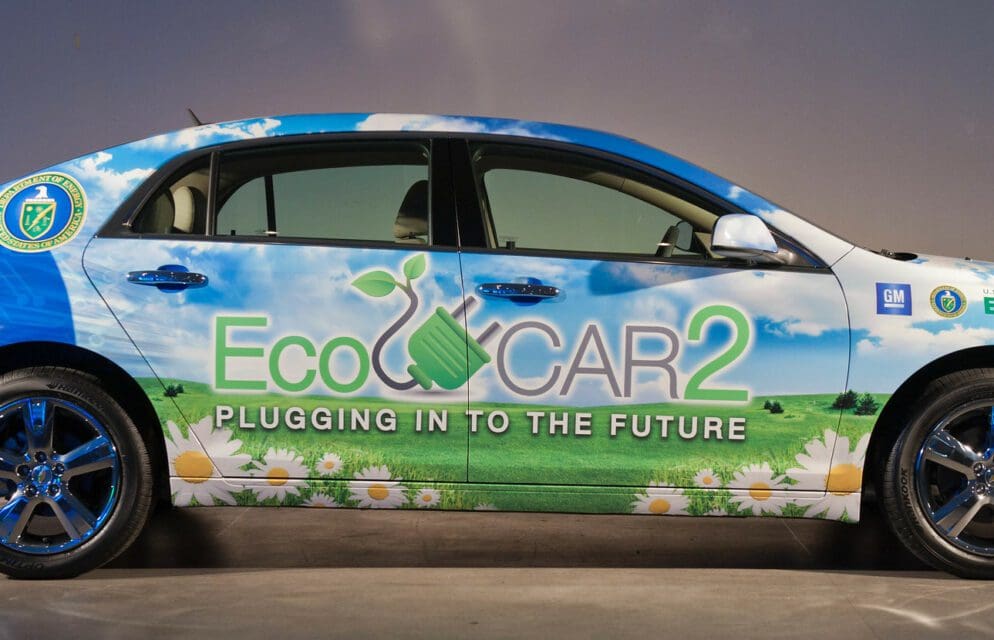
EcoCAR 2: Plugging into the Future

EcoCAR 2: Plugging into the Future
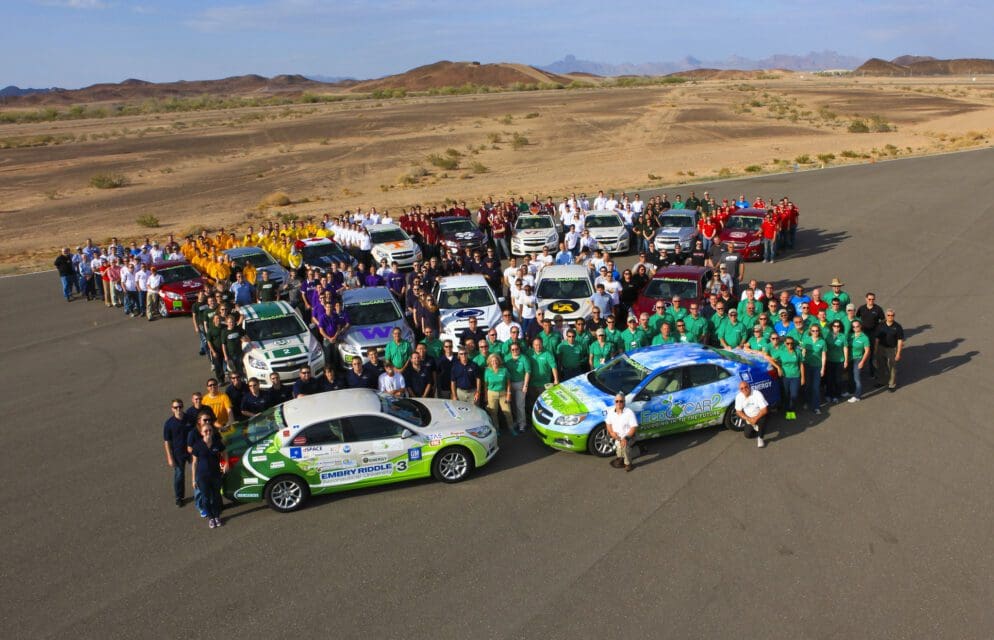
EcoCAR 2: Plugging into the Future
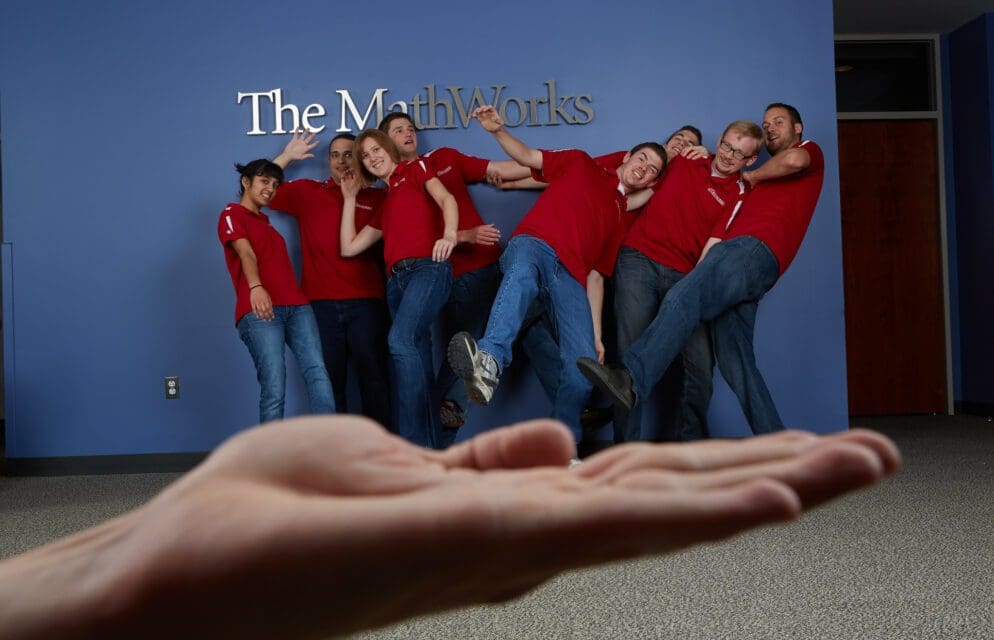
EcoCAR 2: Plugging into the Future
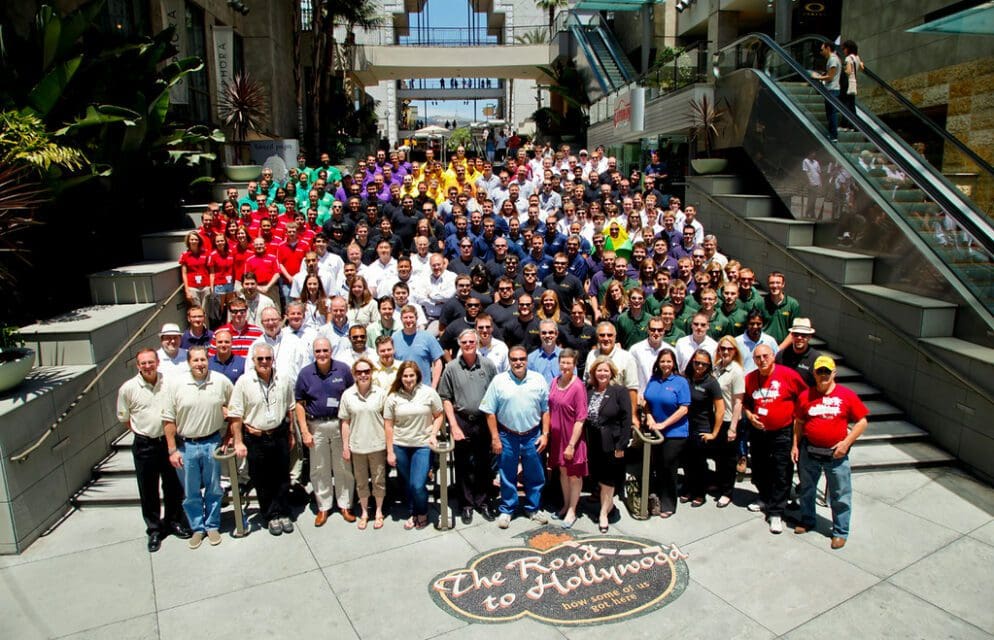
EcoCAR 2: Plugging into the Future
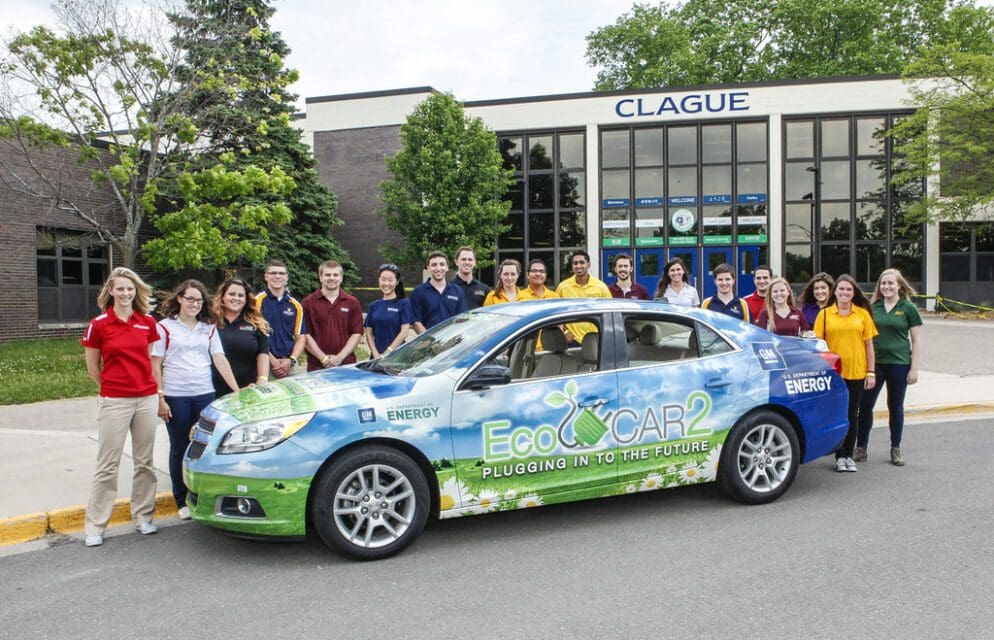
EcoCAR 2: Plugging into the Future
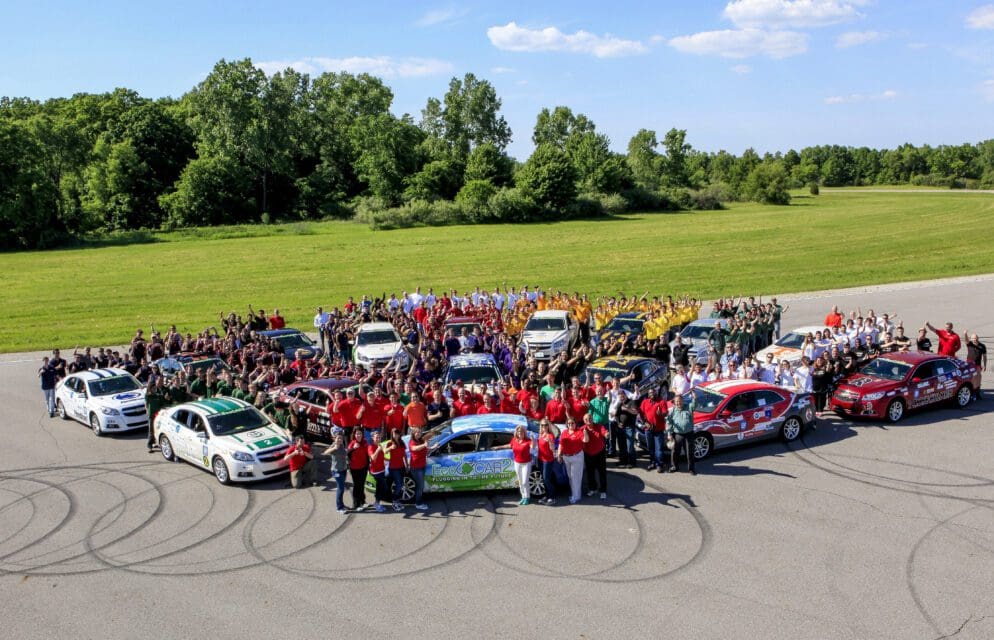
EcoCAR 2: Plugging into the Future
Innovations & Highlights
Over the course of three years, EcoCAR 2 teams reduced the environmental impact of a Chevrolet Malibu by minimizing the vehicle’s fuel consumption and reducing its emissions while retaining the vehicle’s performance, safety and consumer appeal.
Teams had to meet the competition’s technical goals which were to design and integrate vehicle powertrains that, when compared to the production gasoline vehicle (1) reduce petroleum energy consumption on the basis of a total-fuel-cycle well-to-wheel (WTW) analysis, (2) increase vehicle energy efficiency, (3) reduce WTW greenhouse gas (GHG) and criteria emissions; and (4) maintain consumer acceptability in the areas of performance, utility and safety.
- In the fall of Year One, teams used numerical modeling software to evaluate different powertrains, including CAD for component packaging and Autonomie or other powertrain systems modeling software for energy use modeling
- Colorado State University demonstrated 0-60 MPH acceleration time of 11.2 seconds in Year Two Competition – the best time of the year
- EcoCAR 2 implemented a more real-world, 4-cycle drive cycle for the emissions and energy consumption event to reflect current test methods at the U.S. Environmental Protection Agency
- Teams refined aerodynamics ESS cooling design through CFD analysis
- Virginia Tech, Mississippi State, and other EcoCAR 2 teams implemented electronic touch-screen center stack systems with intuitive user interface capabilities into their vehicles
- The competition added upstream criteria (CO, NOx, THC) emission testing into the scored deliverables to account for the well-to-pump impact of vehicle fuels on urban air quality
- The competition measured and scored electric energy consumption for vehicles in addition to fuel consumption – a first for AVTCs
- In Year Two, 11 out of 15 teams attempted the 100+ mile emissions and energy consumption event
- Ohio State University developed a vehicle powertrain model that could simulate wheel slip and traction control simulation
- Teams were able to seamlessly transition the development cycle of model in the loop to hardware and software-in-the-loop to vehicle testing
- The University of Washington developed a tactile shape changing touch screen using overlay technology
- Teams like the University of Waterloo and Colorado State University utilized 3D printing for vehicle development
- Mississippi State University and Colorado State University developed carbon fiber energy storage system enclosures
- Teams like Ohio State University and Virginia Tech worked with suppliers to design custom electric motors
- Colorado State University designed and built their own fuel cell stacks for their hydrogen vehicle
Universities Involved
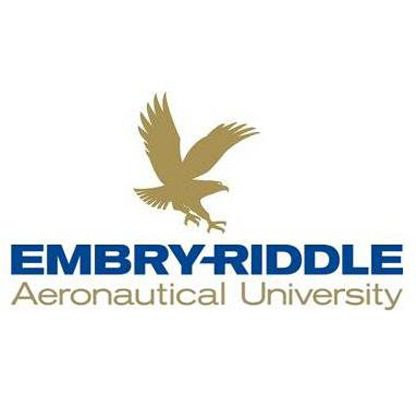
Embry Riddle Aeronautical University
Location
Dayton, FloridaFaculty Advisors
- Marc Compere
- Dr. Patrick Currier David Spitzer
- Ilteris Demirkiran
- Joanne Detore
- John Longshore
- Sandra Boetcher
- Jianhua Liu
- Shafagh Jafer
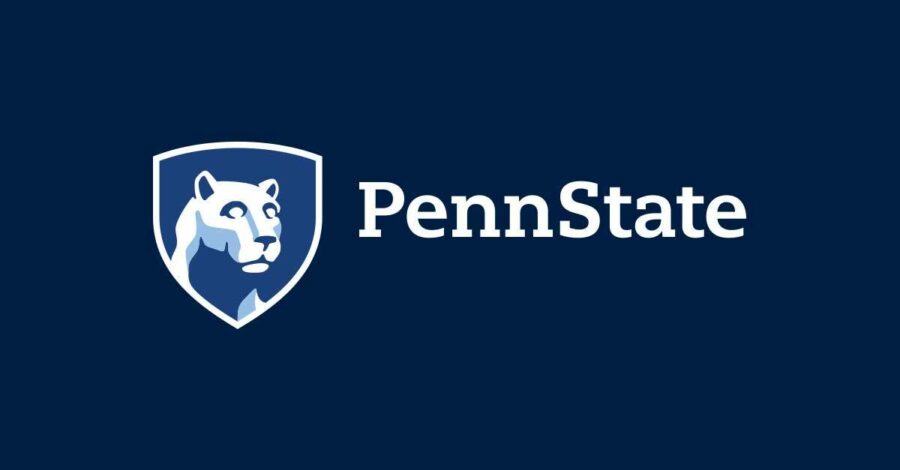
Pennsylvania State University
Location
University Park, PennsylvaniaFaculty Advisors
- Dr. Daniel Haworth
- Dr. Jeffrey Mayer
- Gary Neal
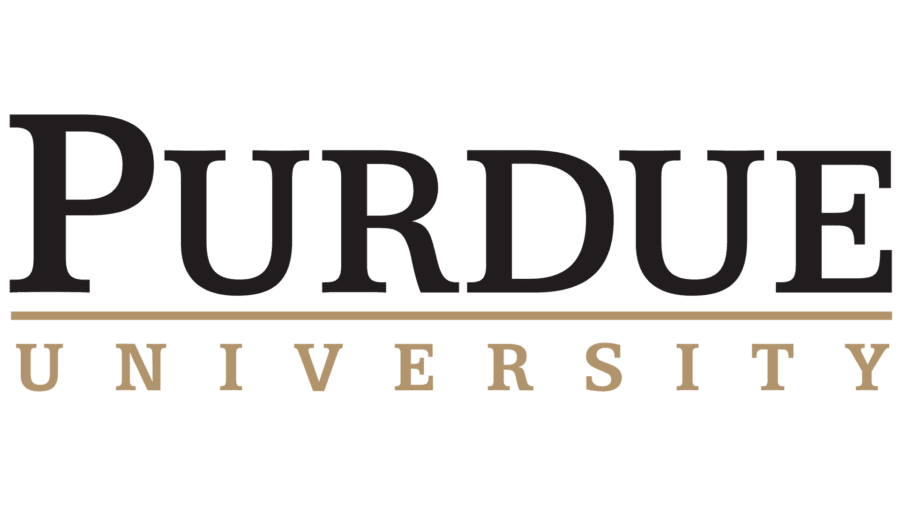
Purdue University
Location
West Lafayette, IndianaFaculty Advisors
- Vahid Motevalli
- Dr. Greg Shaver
- Dr. Olga Wasynczu
- Dr. Henry Zhang
- Dr. Peter Meckl
- Dr. Eric Dietz
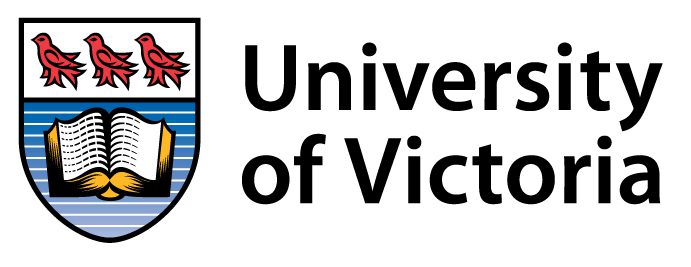
University of Victoria
Location
Victoria, British ColumbiaFaculty Advisors
- Dr. Zuomin Dong
- Dr. Curran Crawford
Winners & Awards
Each year, university teams compete in a variety of static and dynamic events that range from oral presentations to on-road vehicle testing to communications and business execution. These static and dynamic events are judged by industry sponsors and professionals, both throughout the year and in-person at the year-end competition.
Year One 2011-2012
- 1st Place – Mississippi State University
- 2nd Place –Ohio State University
- 3rd Place –University of Waterloo
- 4th Place – Virginia Tech
- 5th Place – University of Washington
- 6th Place – University of Tennessee, Knoxville
- Best Winter Workshop Controller HIL Evaluation, 1st Place – Purdue University
- Best Winter Workshop Controller HIL Evaluation, 2nd Place (tie) - Colorado State University and Ohio State University
- Best Design Reports, 1st Place – University of Waterloo
- Best Design Reports, 2nd Place – Virginia Tech
- Best Design Reports, 3rd Place – Mississippi State University
- Best Facility Inspection – Mississippi State University
- Best Final Technical Report – Mississippi State University
- Best Project Initiation Approval Presentation, 1st Place– Mississippi State University
- Best Project Initiation Approval Presentation, 2nd Place – Ohio State University
- Best Project Initiation Approval Presentation, 3rd Place – University of Waterloo
- Best Controls Presentation, 1st Place – Mississippi State University
- Best Controls Presentation, 2nd Place – Purdue University
- Best Controls Presentation, 3rd Place – The Ohio State University
- Best Electrical Presentation, 1st Place – University of Washington
- Best Electrical Presentation, 2nd Place – Mississippi State University
- Best Electrical Presentation, 3rd Place – Penn State University
- Best Mechanical Presentation, 1st Place – University of Victoria
- Best Mechanical Presentation, 2nd Place – University of Tennessee, Knoxville
- Best Mechanical Presentation, 3rd Place – Penn State University
- Best Final Controller HIL Evaluation, 1st Place – Ohio State University
- Best Final Controller HIL Evaluation, 2nd Place – Mississippi State University
- Best Final Controller HIL Evaluation, 3rd Place – Purdue University
- Outreach Program, 1st Place – University of Waterloo
- Outreach Program, 2nd Place – Pennsylvania State University
- Outreach Program, 3rd Place – The Ohio State University
- Best Media Relations Program – Mississippi State University
- Best Overall Public Outreach Program –Mississippi State University
- Spirit of Outreach – University of Washington
- Best Creative Promotion – The Ohio State University
- Best Sponsor Collaboration – University of Waterloo
- Best Youth Education Presentation – Virginia Tech
- Best Communication Plan – University of Waterloo
- Best Website – Pennsylvania State University
- Best Clean Cities Collaboration – Pennsylvania State University
- Best Trade Show Evaluation, 1st Place – Mississippi State University
- Best Trade Show Evaluation, 2nd Place – The Ohio State University
- Best Trade Show Evaluation, 3rd Place – Virginia Tech
- Editor’s Pick Award – University of Washington
- Best Year One Business Program Execution –University of Waterloo
- Best Three Year-Business Plan –University of Waterloo
- Best Business Program, 3rd Place – Ohio State University
- Best Business Program, 2nd Place – Mississippi State University
- Best Business Program, 1st Place – University of Waterloo
- Team to Watch Award – Embry-Riddle Aeronautical University
- Ron Stence Spirit of the Challenge Award – Wayne State University
- Dr. Donald Streit Sportsmanship Award – Rose- Hulman Institute of Technology
- Freescale Innovation Award, 1st Place – Virginia Tech
- Freescale Innovation Award, 2nd Place – Purdue University
- Freescale Innovation Award, 3rd Place – University of Victoria
- A123 Systems Energy Storage System Design Award, 1st Place – University of Washington
- A123 Systems Energy Storage System Design Award, 2nd Place – Mississippi State University
- A123 Systems Energy Storage System Design Award, 3rd Place – University of Victoria
- dSPACE Embedded Success Awards, 1st Place –Ohio State University
- dSPACE Embedded Success Awards, 2nd Place – Mississippi State University
- dSPACE Embedded Success Awards, 3rd Place – Purdue University
- MathWorks Modeling Award, 1st Place (tie): Ohio State University and the University of Victoria
- MathWorks Modeling Award, 3rd Place – Embry-Riddle Aeronautical University
- Women in the Winner’s Circle Foundation Women in Engineer Awards – Amanda Hyde, Ohio State University; Rachel Wheeler, Mississippi State University; and Haley Moore, Purdue University
- National Science Foundation Outstanding Incoming Faculty Advisor – Brian Fabien, University of Washington
- National Science Foundation Outstanding Long Term Faculty Advisor – Gary Neal, Penn State University
Year Two 2012-2013
- 1st Place Overall – Penn State University
- 2nd Place Overall – California State University – Los Angeles
- 3rd Place Overall – Ohio State University
- 4th Place Overall – University of Washington
- 5th Place Overall – Mississippi State University
- 6th Place Overall – Virginia Tech
- Best Final Technical Report – Ohio State University
- Best 0-60 MPH and 50-70 MPH Acceleration: Penn State University
- Dynamic Consumer Acceptability – Penn State University
- Best Maximum Lateral Acceleration – University of Washington
- Best Autocross Time – Penn State University
- Best Autocross Fun Run Time – Chris Reid of California State University, Los Angeles
- Best AVL DRIVE Quality – Penn State University
- Lowest Energy Consumption – University of Washington
- Lowest Petroleum Energy Use – University of Washington
- Lowest Well-to-Wheel Greenhouse Gas Emissions - University of Washington
- Lowest Criteria Emissions - University of Washington
- Best Static Consumer Acceptability – Virginia Tech
- Best Vehicle Design Review Presentation – Mississippi State University
- Best Controls Presentation – Mississippi State University
- Best Mechanical Presentation – University of Victoria
- Best Electrical Presentation – Ohio State University
- Best Modeling & Simulation Presentation, 3rd Place – Mississippi State University
- Best Modeling & Simulation Presentation, 2nd Place – Purdue University
- Best Modeling & Simulation Presentation, 1st Place – Ohio State University
- Best Pre-Competition Safety Inspection – Cal State, Los Angeles
- Best Progress Reports – Ohio State University
- Communications, 1st Place – Penn State University
- Communications, 2nd Place – Ohio State University
- Communications, 3rd Place – Virginia Tech
- Best Communications Plan – Penn State University
- Best Sponsor Collaboration Video & Blog – University of Waterloo
- Best Media Report – Penn State University
- Creative Promotion of EcoCAR – Rose-Hulman Institute of Technology
- Spirit of Communications – Embry-Riddle Aeronautical University
- Best Outreach Event Presentation – Mississippi State University
- Communications, 1st Place – Penn State University
- Business, 1st Place – Ohio State University
- Business, 2nd Place – University of Tennessee, Knoxville
- Business, 3rd Place – Mississippi State University
- Best Business Plan – Ohio State University
- Best Sponsorship Pitch & Table Top Display – Ohio State University
- Best Business Plan Results Report – Ohio State University
- Best Final Business Presentation – Ohio State University
- Spirit of Business – University of Tennessee, Knoxville
- Best Vehicle Appearance – Embry-Riddle Aeronautical University
- Best Fabrication and Workmanship Award – North Carolina State University
- Most Improved Team – California State University – Los Angeles
- Spirit of the Challenge – Colorado State University
- Dr. Donald Streit Sportsmanship Award – Rose-Hulman Institute of Technology
- Women in Engineering Rookie – Erin Merkley, University of Waterloo
- Women in Engineering Award – M.J. Yatsko, Ohio State University
- Freescale Innovation Award, 3rd Place – Virginia Tech
- Freescale Innovation Award, 2nd Place - University of Washington
- Freescale Innovation Award, 1st Place – University of Victoria
- A123 Energy Storage System Integration Award, 3rd Place – Virginia Tech
- A123 Energy Storage System Integration Award, 2nd Place – Embry-Riddle Aeronautical University
- A123 Energy Storage System Integration Award , 1st Place – University of Washington
- dSPACE Embedded Success Award, 3rd Place (tied) – Penn State and Embry-Riddle
- dSPACE Embedded Success Award, 2nd Place – Virginia Tech
- dSPACE Embedded Success Award, 1st Place – Mississippi State University
- MathWorks Modeling Award, 3rd Place – Mississippi State University
- MathWorks Modeling Award, 2nd Place - Ohio State University
- MathWorks Modeling Award, 1st Place – University of Victoria
- Best Collaboration with a Clean Cities, 3rd Place – Penn State University
- Best Collaboration with a Clean Cities, 2nd Place – Wayne State University
- Best Collaboration with a Clean Cities , 1st Place – Ohio State University
- National Science Foundation Outstanding Incoming Faculty Award – Dr. Tom Bradley of Colorado State University
- National Science Foundation Outstanding Long-Term Faculty Award – Dr. Doug Nelson of Virginia Tech
Year Three 2013-2014
- 1st Place Overall – The Ohio State University
- 2nd Place Overall – University of Washington
- 3rd Place Overall – Penn State University
- 4th Place Overall – Purdue University
- 5th Place Overall – Embry-Riddle Aeronautical University
- 6th Place Overall – Virginia Tech
- Best 0-60 MPH and 50-70 MPH Acceleration: University of Washington
- Best 60-0 MPH Braking Distance: Purdue University
- King of the Hill Award: University of Washington
- Best Autocross Time: Wayne State University
- Dynamic Consumer Acceptability – University of Washington
- Best Maximum Lateral Acceleration – Wayne State University
- Best AVL DRIVE Quality – Penn State University
- Lowest Energy Consumption Runner Up– Penn State University
- Lowest Energy Consumption- University of Washington
- Lowest Petroleum Energy Use Runner Up – Penn State University
- Lowest Petroleum Energy Use - The Ohio State University
- Lowest Well-to-Wheel Greenhouse Gas Emissions Runner Up – Purdue University
- Lowest Well-to-Wheel Greenhouse Gas Emissions – University of Washington
- Lowest Criteria Emissions Runner Up – Penn State University
- Lowest Criteria Emissions- The Ohio State University
- Best Final Technical Report: The Ohio State University
- Best Static Consumer Acceptability – The Ohio State University
- Best Vehicle Design Review Presentation – Embry-Riddle Aeronautical University
- Best Controls Presentation – The Ohio State University
- Best Mechanical Presentation – Penn State University
- Best Electrical Presentation – The Ohio State University
- Best Cumulative Modeling & Simulation White Paper – Ohio State University
- Best Pre-Competition Safety & Technical Inspection – Ohio State University
- Best Progress Reports – Ohio State University
- Best Chassis Dynamometer Test Plan – Virginia Tech
- Best Communications Plan – Ohio State University
- Best Implementation Plan – Penn State University
- Best Influencer Campaign – Ohio State University
- Best Sponsor Collaboration Video & Blog – Virginia Tech
- Best Media Report – Ohio State University
- Creative Promotion of EcoCAR – Embry-Riddle Aeronautical University
- Spirit of Communications – Ashley Kronsell - Rose-Hulman Institute of Technology
- Best Outreach Event Presentation – The Ohio State University
- 3rd Place Communications – Mississippi State University
- 2nd Place Communications – Penn State University
- 1st Place Communications – The Ohio State University
- Best Business Plan – Virginia Tech
- Best Impact Report – Virginia Tech
- Final Business Presentation – The Ohio State University
- Spirit of Business – University of Tennessee, Knoxville
- 3rd Place Business – University of Waterloo
- 2nd Place Business – Virginia Tech
- 1st Place Business – The Ohio State University
- Most Improved Team – Embry-Riddle Aeronautical University
- Spirit of the Challenge – North Carolina State University
- Donald Streit Sportsmanship Award – University of Victoria
- Best Vehicle Appearance – University of Washington
- ETAS ECU Excellence Award (2nd – 1st Respectively) – University of Waterloo and The Ohio State University
- Freescale Innovation Award (3rd – 1st Respectively) – Virginia Tech, University of Washington, and Mississippi State University
- dSPACE Embedded Success Award (3rd – 1st Respectively) – University of Waterloo, University of Victoria, and The Ohio State University
- MathWorks Modeling Award (3rd – 1st Respectively) – Virginia Tech, The Ohio State University, and University of Victoria
- Clean Cities Collaboration Award (3rd – 1st Respectively) – Penn State University, The Ohio State University, and University of Tennessee, Knoxville
- General Motors Women in Engineering Award – Sylvie Troxel of the University of Washington
- National Science Foundation Outstanding Incoming Faculty Advisor Award – Patrick Currier of Embry-Riddle Aeronautical University
- National Science Foundation Outstanding Long-Term Faculty Advisor Award: Roydon Fraser of the University of Waterloo
Sponsors
EcoCAR 2 Media Coverage
Take a look back at the competition by reading previous press coverage, program materials and documents, publications, videos, and photos in the news and media section!
Select a tab above to view content
- U.S. Department of Energy and General Motors Launch EcoCAR 2 at SAE 2011 World Congress - April 11, 2011
- Department of Energy Announces Advanced Vehicle Technology Competition, EcoCAR 2: Plugging into the Future - April 13, 2011
- Standards Raised For EcoCAR 2 College Teams- May 4, 2011
- Needed: A Steve Jobs for Electric Cars - October 6, 2011
- UW Team Revs Up to Design a Super-Hybrid - November 29, 2011
- Embry-Riddle Aeronautical University and EcoCAR Featured in Hemispheres Magazine - December 2011
- In Energy Department Competition, Students Wield Textbooks and Welding Torches - February 9, 2012
- Alternative-fuel project has Rose, ISU students all charged up - February 13, 2012
- Student Eco-Engineering Announce Plug-In Hybrid Architectures - February 22, 2012
- Energy Department Makes a Difference Helping Students’ Careers - February 22, 2012
- Siemen's Future Engineer Series: Meet Jon Nibert of Rose-Hulman - February 22, 2012
- EcoCAR 2 Announces Student Vehicle Architectures - March 14, 2012
- Obama to tour auto research center at Ohio State - March 21, 2012
- EcoCar 2 Competition Offers Students the Chance to Drive Future of Hybrid Cars - March 26, 2012
- Wayne State Hybrid Warriors Unveil Architecture For EcoCAR Competition - April 11, 2012
- How a Single Partnership with EcoCAR Blossomed into a Workforce Development Program- April 12, 2012
- UW students rev up for green car competition - April 19, 2012
- EcoCAR 2: Plugging In to the Future via ASME - April 2012
- Kids, Cars and Designing For the Future TODAY: The EcoCAR 2 Challenge - May 2012
- Cramming for Degrees in Hybrids via The New York Times - May 18, 2012
- EcoCAR 2 Announces Year One Winner: Mississippi State University - May 24, 2012
- The real prize for GM's EcoCAR 2 challenge? A job offer! - May 24, 2012
- Student teams to turn Chevrolet Malibus into EcoCars - May 24, 2012
- EcoCAR 2 Announces Year One Winner: Mississippi State University - May 24, 2012
- Mississippi State claims first-year prize for EcoCar 2 competition - May 24, 2012
- Mississippi State Takes First-Round Win in EcoCAR 2 Challenge - May 24, 2012
- EcoCAR 2 Challenges Students To Build Road-Ready Hybrids - June 14, 2012
- NCSU students design EcoCar for the future - July 3, 2012
- Hybrid Learning: Schools Design, Build Chevy Malibu Plug-In Hybrids in EcoCar 2 Competition - July 5, 2012
- Cal State L.A.’s EcoCAR 2 team gets under the hood of its long-awaited Chevy Malibu - July 5, 2012
- EcoCAR 2 Teams from Ohio State University, University of Victoria and Embry-Riddle Receive MathWorks Modeling Award - July 25, 2012
- UT students convert Chevy Malibu for class project - August 6, 2012
- Plugging into the Chevy Malibu’s Eco Future - September 1, 2012
- Auto industry battling Silicon Valley for best college engineering talent - September 21, 2012
- MathWorks hosts EcoCAR2 student competitors in Natick - October 2, 2012
- Students to rebuild eco-friendly car - November 29, 2012
- UW students turning 2013 Malibu into fuel-saving dual-motor hybrid - December 2, 2012
- Wayne State represents Michigan in EcoCAR 2 - December 21, 2012
- Connect A Million Minds: Students drive sustainability message through EcoCAR2- January 10, 2012
- OSU's CAR host for EcoCar 2 competition - March 6, 2013
- How A Group Of College Students Are Responding To President Obama's Energy Challenge - March 28, 2013
- EcoCAR 2 team close to putting it together- April 6, 2013
- EcoCAR 2 Revs Up at Winter Workshop- April 19, 2013
- Team Tennessee engages engineering interest among students - May 1, 2013
- Jobs Report with CNBC - May 3, 2013
- EcoCAR 2 Student Competition in Yuma - May 16, 2013
- College students find ways to improve fuel economy - May 23, 2013
- EcoCAR 2 Competition Announces Year Two Winner: Penn State University - May 24, 2013
- EcoCAR 2 Competition Announces Year Two Winner: Penn State University - May 24, 2013
- Stevens Point Native on EcoCAR 2 Team - May 24, 2013
- E85 plug-in hybrid Chevy Malibu powers Penn State to second year EcoCar 2 win - May 24, 2013
- Pennsylvania State University Leading EcoCAR 2 - May 28, 2013
- EcoCAR teams use E85 as part of winning strategy - June 3, 2013
- Calling all 'codaholics': Automakers vie for tech talent - July 29, 2013
- MathWorks in Natick helps students with quest to build eco-cars - Sept. 28, 2013
- Ride of a lifetime: UW students shape next-generation cars - October 14, 2013
- EcoCAR 2 revs students up with real-world automotive experience - November 17, 2013
- Students present EcoCar to local first responders - November 19, 2013
- Electric-drive vehicle engineering expert, EcoCAR 2 advisor invests time and energy to help students aim higher - January 14, 2014
- Students transform Chevy Malibu for EcoCAR 2 competition - June 4, 2014
- Start Your Center Stacks: Inside the EcoCAR 2 Control Screen Competition - June 2014
- Ready, Set, Innovate: The College Car Challenge That Leads to a Job- June 6, 2014
- Comms Candidates Cut Their Teeth at EcoCAR2 June 11, 2014
- EcoCAR 2 Competition by WTOP - June 12, 2014
- Ohio State University Races to the Finish as the Winner of EcoCAR 2 June 13, 2014
- Colleges compete in eco-challenge to build a better car - June 12, 2014
- EcoCAR 2 is on the hunt for a better, cleaner Chevy Malibu June 12, 2014
- EcoCAR 2 Contest Winners Announced - June 16, 2014
- EcoCAR 2 Is As Close To The Real Thing As It Gets For Engineering Students - June 18, 2014
- EcoCAR 2 Teaches Students Hands On Development - June 18, 2014
- Purple power: Here’s the Chevy Malibu that UW students modified to win 2nd place in the EcoCar challenge - June 20, 2014
- Ethanol, part of the winning strategy - July 21, 2014
- Hybrid Architecture Selection to Reduce Emissions and Petroleum Energy Consumption - April 16, 2012
- Design of a Parallel-Series PHEV for the EcoCAR 2 Competition - September 10, 2012
- An Innovative 4WD PHEV Utilizing a Series-Parallel Multiple-Regime Architecture
- The University of Tennessee's EcoCAR 2 Final Design Report - September 10, 2012
- The University of Waterloo Alternative Fuels Team's Approach to EcoCAR 2 - September 10, 2012
- Development of a Parallel through the Road Plug-In Hybrid Electric Vehicle September 10, 2012
- An Innovative 4WD PHEV Utilizing a Series-Parallel Multiple-Regime Architecture - September 10, 2012
- Preliminary Design of a Bio-Diesel Plug-in Hybrid Electric Vehicle as part of EcoCAR 2: Plugging-in to The Future - September 10, 2012
- Design, Development and Validation of the 2013 Penn State University E85 Series Plug-In Hybrid Vehicle - September 10, 2012
- Design of a Series-Parallel Plug-in Hybrid Sedan through Modeling and Simulation- September 10, 2012
- Parallel-Through-The-Road Plug-In Hybrid Vehicle Design Development Process - September 10, 2012
- Design and Development Process of a Parallel-Through-The-Road Plug-In Hybrid Electric Vehicle - September 10, 2012
- Vehicle System Design Process for a Series-Parallel Plug-in Hybrid Electric Vehicle - September 10, 2012
- Designing a Parallel-Through-the-Road Plug-in Hybrid Electric Vehicle - September 10, 2012
- Key Outcomes of Year One of EcoCAR 2: Plugging in to the Future - April 8, 2013
- Model-Based Design of a Plug-In Hybrid Electric Vehicle Control Strategy - April 8, 2013
- Detailed Design of a Fuel Cell Plug-in Hybrid Electric Vehicle - April 8, 2013
- HMI Design for Increasing Vehicle Energy Efficiency by Affecting Driving Habits- April 8, 2013
- Designing a High Voltage Energy Storage System for a Parallel-Through-The-Road Plug-In Hybrid Electric Vehicle - April 8, 2013
- Development of a Plug-In Hybrid Electric Vehicle Control Strategy Employing Software-In-the-Loop Techniques - April 8, 2013
- Fabrication of a Parallel-Series PHEV for the EcoCAR 2 Competition - October 14, 2013
- Mississippi State University EcoCAR 2 Final Technical Report - October 14, 2013
- Implementation and Validation of a Series Plug-In Hybrid Electric Vehicle - October 14, 2013
- The University of Tennessee's EcoCAR 2 Year Two Final Technical Report - October 14, 2013
- Implementation of Series-Parallel Multiple-Regime Vehicle Architecture Using 2013 Chevrolet Malibu Platform - October 14, 2013
- Vehicle Design and Implementation of a Series-Parallel Plug-in Hybrid Electric Vehicle - October 14, 2013
- Designing a Rear Suspension Cradle for Usage in a Parallel-Through-the-Road Plug-In Hybrid Electric Vehicle – April 1, 2014
- Efficient Thermal Modeling and Integrated Control Strategy of Powertrain for a Parallel Hybrid EcoCAR2 Competition Vehicle – April 1, 2014
- Advanced Vehicle Powertrain Design, Validation, and Integration for the EcoCAR 2 Advanced Vehicle Technology Competition – April 1, 2014
- Detailed Analysis of a Fuel Cell Plug-in Hybrid Vehicle Demonstration – April 1, 2014
- Structuring a Hybrid Vehicle Supervisory Control System Simulink Model for Simpler Version Control with Multiple Software Developers – April 1, 2014
- ESS Design Process Overview and Key Outcomes of Year Two of EcoCAR 2: Plugging in to the Future – April 1, 2014
- Optimization for Plug-In Vehicles - Waste Heat Recovery from the Electric Traction Motor – April 1, 2014
- Development of a Dynamic Driveline Model for a Parallel-Series PHEV – April 1, 2014
- Novel Battery Cold Plate Design for Increased Passive Cooling – April 1, 2014
- Powertrain Integration and Controls Development Process for a Parallel Through the Road Plug-in Hybrid Electric Vehicle – April 1, 2014
- Plug-In Hybrid Electric Vehicle Architecture Comparison for Strong Hybridization of A Mid-Size Sedan as Part of EcoCAR2: Plugging Into the Future – April 1, 2014
- Powertrain Design to Meet Performance and Energy Consumption Goals for EcoCAR 3 – April 1, 2014
- Developing Modeling and Simulation Tools in Class to Prepare Engineering Students for the Automotive Industry – April 1, 2014
